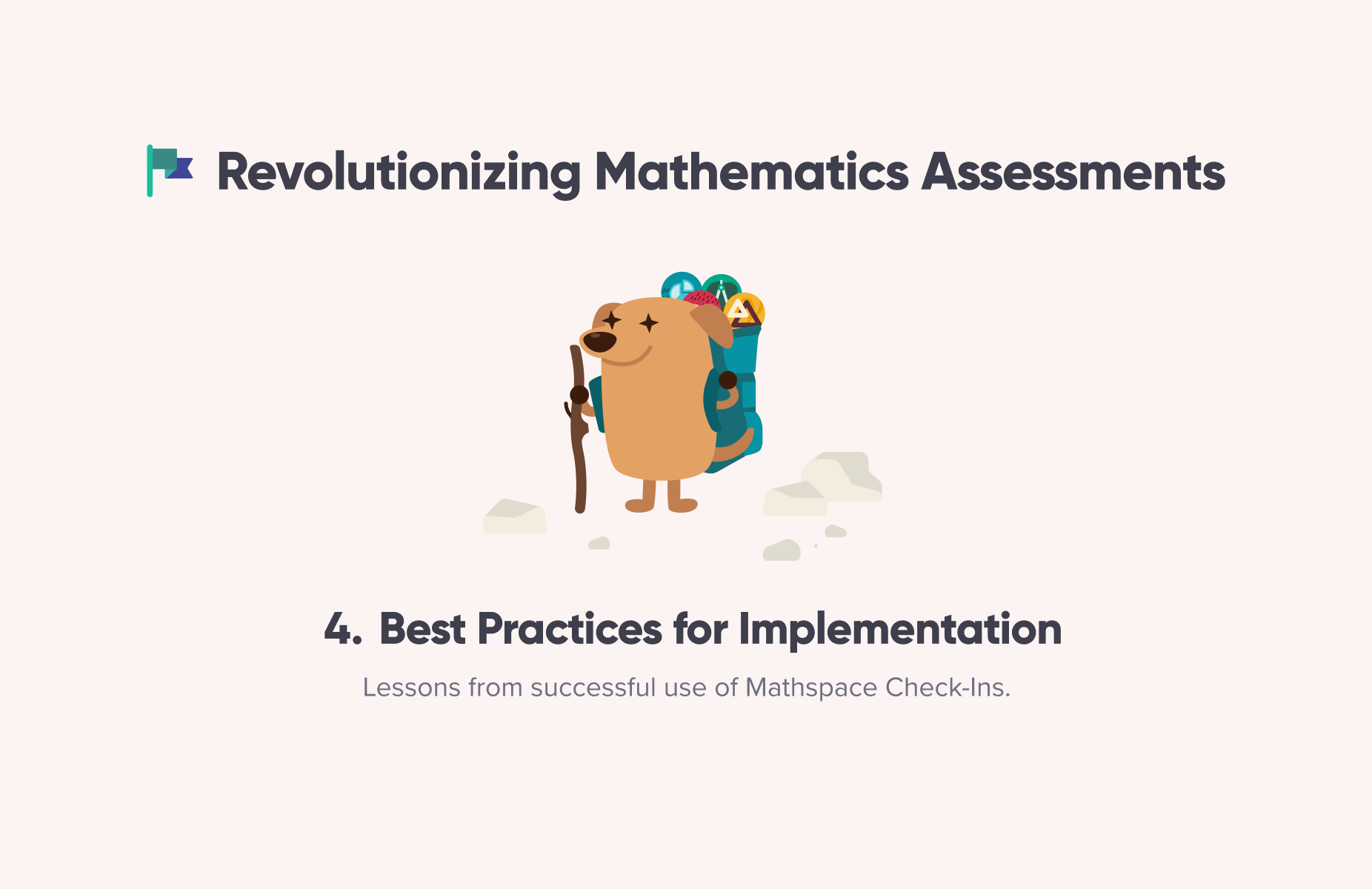Revolutionizing Mathematics Assessments Pt. 4: Best Practices for Implementation
The fourth and final part of the series looking at how Mathspace Check-Ins work, why they matter and how to implement them effectively. Pt. 4 outlines best practice for implementing Check-Ins.

So far we've looked at how Check-Ins work, exploring some of the technical architecture that powers them, as well as why we believe they're revolutionary. If you haven't read them, we would recommend going back to parts one, two and three of this four-part series.
In this final post, we're going to move onto the implementation. How can you start making use of Check-Ins in your classroom? What's the best way to start seeing results?
How schools use Check-Ins
Just as the data output from Check-Ins is only beneficial if action is taken, understanding how Check-Ins work is all well and good but it is the actual implementation that matters. So what does the use of Check-Ins look like in a maths classroom?
Whilst every classroom is different and current classroom routines should be taken into account, the best practice that has emerged from our work with schools is simple to follow and embed:
- Students complete a Discovery Check-In at the outset of a new topic if they have not already done so (e.g. the first time they encounter a Geometry topic)
- Students complete a Skill Check-In at the end of each practice task - whether that practice was teacher-assigned or self-directed
- Students complete weekly Growth Check-Ins, ideally on the same day each week
By implementing Check-Ins in this way, teachers can ensure that students always have a defined learning path with appropriate recommended practice. Although not essential, it may also be beneficial to set up routines for that practice e.g. "Mathspace Mondays" or "Check-In Tuesdays". Alternatively, teachers may set targets like the number of skills a student has shown growth in or how many recommended practice tasks they have completed.

At Mathspace, we're committed to continually improving and adapting our Check-Ins to provide the best learning experience for all students. Through continued innovation, we're reshaping mathematics assessment. With the accelerating pace of change in the field of AI, we are excited to continue to improve mathematics education, making it more personalized, more adaptive, and more effective for all students.
If you’re not already on that journey with us, you can sign up for a free student or teacher account or try our demo Check-In.
